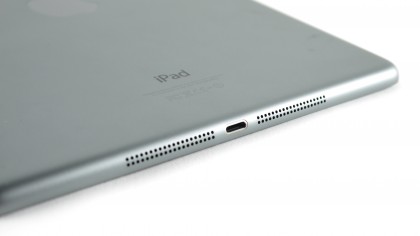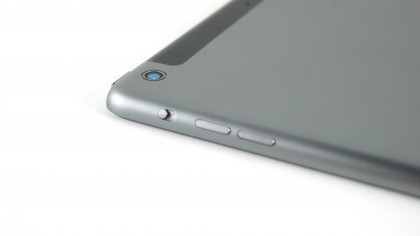What's inside your iPad: A look at the technology inside the iPad Air
What the A7, M7, iSight and Retina Display really mean for you
Internet connectivity
The Apple iPad Air boasts dual W-Fi antennas and Multiple-Input Multiple-Output (MIMO) compatibility, which is a technology that enables the device to access more than one data stream at a time. Theoretically, these innovations combine to double potential theoretical download speeds to 300Mbps, although broadband connections of that speed are still very rare.
Regardless, it means sharing files, streaming movies, downloading apps and everything in between can be done a little faster. In terms of mobile or cellular data, the iPad Air can be used with 2G, 3G and, more importantly the next generation 4G LTE networks at speeds up to 100Mbps.
The iPad Air has also expanded the number of 4G LTE bands it supports making it great if you're travelling, as you can just slot in a local SIM card.
Bluetooth and AirPlay connectivity
There's plenty of connectivity tech sitting within the iPad Air, which can allow you interact with other gadgets. The tablet features a Bluetooth 4.0 LE radio, the newest generation of low energy Bluetooth connectivity. The key benefit for users will be the ability to stream music to Bluetooth-enabled speakers, connect to your fitness wristband or use a Bluetooth keyboard for longer without destroying the iPad Air's battery life.
Apple also uses the proprietary AirPlay technology, which allows users to send media over Wi-Fi other devices. If you have an Apple TV device you're able to mirror your iPad's screen on your television while also sending video or audio content. There are also plenty of AirPlay-enabled speakers to choose from.
Battery and charging
The iPad Air's battery is slightly smaller than in previous generations (32.4Wh compared with 42.5Wh in the iPad 4), which allows Apple to make the device thinner and lighter than ever. However, the energy efficiency of the A7 and M7 processors and the lower strain caused by the IGZO LCD backplane means Apple is still able to advertise up to 10 hours of constant use from the battery when surfing the web (Wi-Fi), watching video or listening to music.

That smaller battery also means it takes less time to charge. AnAnTech benchmarking tests have shown the iPad Air reaches full charge in 4.1 hours, compared with 5.7 hours on the iPad 4. The device is charged through the USB-to-Lightning cable, which is Apple's newer connectivity tech and is 80% smaller than the longstanding 30-pin option. However, Lightning is based on USB 2.0 technology rather than the newer USB 3.0 or Thunderbolt connectivity technology, meaning data transfer is not as fast as it could be.
Get daily insight, inspiration and deals in your inbox
Sign up for breaking news, reviews, opinion, top tech deals, and more.
Camera
Apple has placed far less focus on the rear-facing camera in the iPad Air compared with its prominence on the latest iPhone models, which is no surprise when you consider taking photos or shooting video on a near 10-inch device is an ungainly experience. However, the camera is still capable of surprisingly good photos.
Apple has kept the same sensor from the iPad 4 and slotted it into the iPad Air. It shoots at 5MP (very modest by today's standards) with an aperture of f2.4, while serving up a wider-angled 3.3mm focal length. Results drop off in low light conditions but that's to be expected. It can also shoot video at full 1080p HD meaning it won't look out of place when played back on your home television set.

However the real winner is the 1.2MP front facing camera which also offers 720p video calling, for crisp, clear conferencing with your family. It's also pretty good for the odd selfie too. Apple has done well to scale these camera modules down to fit within a tablet that's just 7.5mm deep – 20% thinner than last year's model.
- Take a look at what we think Apple might include in the iPad Air 2.
A technology journalist, writer and videographer of many magazines and websites including T3, Gadget Magazine and TechRadar.com. He specializes in applications for smartphones, tablets and handheld devices, with bylines also at The Guardian, WIRED, Trusted Reviews and Wareable. Chris is also the podcast host for The Liverpool Way. As well as tech and football, Chris is a pop-punk fan and enjoys the art of wrasslin'.
